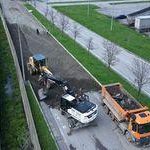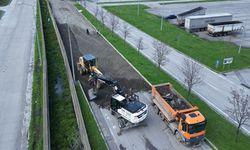In the world of transportation, efficiency plays a critical role. Trucking professionals are always looking for ways to optimize their operations. It’s about combining performance with sustainability. The balance between cost-effectiveness and environmental responsibility can be achieved through informed choices.
Many drivers think it’s just about driving faster or carrying heavier loads. However, small adjustments in daily routines can yield significant outcomes. These enhancements not only lead to lower operating costs but also foster a greener future. They can be surprisingly simple yet immensely impactful.
It’s crucial to understand how various factors influence performance during transit. From the choice of routes to maintenance practices, each element contributes to overall effectiveness. Moreover, being aware of driving habits and load management can make all the difference. Making informed decisions can transform the way professionals approach their journeys.
Exploring ways to improve this aspect of transportation not only supports financial health but also promotes a more sustainable industry. Adopting modern technologies and practices holds promise for all involved. With the right mindset and tools, achieving remarkable outcomes is entirely feasible, leading to a win-win scenario for both the driver and the environment.
Maximize Your Fuel Economy

Driving a truck comes with its own set of challenges, especially when it comes to operating costs. Every drop counts, and smarter maneuvers on the road can lead to significant benefits. Optimizing your performance means not only understanding your vehicle but also the conditions you drive in.
Start by maintaining your vehicle’s engine. Regular check-ups are essential. Filters should be clean and fluid levels optimal. Additionally, tire pressure plays a crucial role. Under-inflated tires can severely hamper your performance.
When considering your route, focus on avoiding congested areas. Less stop-and-go traffic translates into better fuel utilization. Plan ahead, and utilize technology to identify shortcuts. Aim for consistency in your speed, since rapid acceleration can increase consumption.
Another effective method is to monitor your driving habits closely. Aggressive maneuvers waste valuable resources. Instead, smooth acceleration and gentle braking will foster a more economical performance overall. Many find that adjusting habits leads to noticeable savings over time, painting a clear picture of the benefits of mindful driving.
Remember the weight you carry. Excess cargo burdens your vehicle, causing it to work harder. Evaluate your load frequently and discard anything unnecessary. In the long run, a lighter truck is a more efficient one.
Finally, consider additional equipment that streamlines performance. Aerodynamic enhancements can minimize resistance, aiding your adventure on the road. Embracing small changes can lead to larger gains, creating a sustainable approach to your journeys.
Understanding Fuel Efficiency Ratings

When considering performance and consumption, it’s crucial to grasp the various assessments that define vehicle capabilities. These evaluations provide insight into how effectively a vehicle utilizes energy. Each score or rating offers a glimpse into potential cost savings and environmental impact. The higher the rating, the more advantageous it often is for both the wallet and the planet.
Different systems exist to measure these ratings. Researchers and engineers use various methodologies to present an accurate picture. Understanding these standards can guide choices and enhance overall performance. It’s not just about numbers; it’s about the implications they carry for daily use.
In addition, familiarity with these benchmarks helps in making informed decisions. A comprehensive overview allows drivers to prioritize vehicles that align with their needs. Lower consumption leads to reduced operational costs, which is vital in the logistics industry.
Moreover, selecting models that demonstrate superior ratings can lead to a significant reduction in resource utilization across the board, contributing to more sustainable practices while ensuring that drivers and companies can thrive in an increasingly competitive market.
Factors Affecting Fuel Performance
The performance of any vehicle is influenced by various elements. Understanding these aspects can lead to better management. Maintenance, load, and driving habits all play significant roles. Small changes can yield substantial results. It’s crucial to examine how these factors interact in daily operations.
One prominent element is vehicle maintenance, which directly impacts operational efficiency. Regular checks on tire pressure, engine performance, and other mechanical systems ensure everything runs optimally. Neglecting maintenance can lead to poor performance. This results in increased consumption and potential breakdowns. Additionally, the weight carried by the vehicle greatly influences how much energy is required to move it.
Driving style should not be overlooked either. Practices such as sharp accelerations and hard braking dramatically affect fuel usage. Smooth driving helps conserve resources, while aggressive maneuvers can negate gains achieved through other means. When combined with proper load distribution and vehicle care, effective driving practices create a synergistic effect that optimizes overall performance.
| Factor | Impact on Performance |
|---|---|
| Vehicle Maintenance | Ensures mechanical efficiency and less fuel consumption. |
| Weight | Heavier loads require more energy to transport. |
| Driving Habits | Smooth driving reduces unnecessary fuel consumption. |
| Tire Pressure | Under-inflated tires increase rolling resistance and fuel usage. |
In summary, a combination of proper vehicle care, mindful weight management, and considerate driving techniques can enhance overall function. This understanding empowers operators to make informed decisions, ultimately leading to improved performance on the road.
Choosing the Right Truck for You
Making a selection for your next vehicle requires careful thought. You need to assess various factors. Each choice comes with its own benefits and limitations. A suitable option can enhance your overall experience on the road.
First, consider your primary needs. What tasks will you perform? Do you have specific cargo requirements? It’s essential to evaluate how often you’ll be hauling heavy loads.
Size is another critical aspect. Trucks vary significantly in dimensions and weight capacities. A larger model may offer more space but can consume extra resources, while a smaller one might be agile but less powerful.
Another important factor is the engine type. Diesel engines typically deliver more torque and better longevity, making them ideal for heavy-duty jobs. However, advancements in gasoline engines have also made them a viable option for various applications.
Additionally, consider the technology features available in modern models. High-tech systems can assist with navigation, improve safety, and increase comfort. Investing in advanced features can provide a better driving experience and potentially lead to lower operational costs.
Lastly, think about brand reputation and after-sales service. A reliable brand with good customer support can significantly influence long-term satisfaction. Weigh your choices carefully and remember that the right decision can make all the difference on the road.
Smart Driving Techniques for Truckers
Mastering the art of driving can lead to significant advantages on the road. It’s not merely about getting from point A to B quickly. Instead, it involves understanding how one’s driving style impacts overall performance. Through conscious choices, one can enhance safety, improve vehicle longevity, and positively affect operational costs. Each decision made behind the wheel can resonate beyond immediate outcomes.
Speed management is crucial. Slow down when possible. Gentle acceleration helps conserve what you’ve got. Maintaining a steady pace keeps the journey smooth. Each rapid change can increase wear and tear. Anticipating traffic conditions allows for smoother transitions. By slowing down and keeping a watchful eye ahead, potential stops can often be avoided.
Utilizing cruise control can assist in reducing fluctuations in speed. This results in a more uniform experience while driving. Combining this with the practice of maintaining a safe following distance can improve reaction time, which in turn reduces unnecessary brakes and accelerations. Adopting a thoughtful approach to gear selection is also vital. Shifting at the right moment can make a noticeable difference in how the vehicle handles.
| Driving Technique | Benefits |
|---|---|
| Steady Speed | Reduces wear on the truck and improves travel time. |
| Gentle Acceleration | Helps maintain better control and efficiency. |
| Proper Gear Shifting | Optimizes engine performance and reduces strain. |
| Cruise Control | Maintains consistent speed, leading to fewer stops. |
Planning routes effectively also contributes to seamless operations. Knowing where to refuel, resting spots, and potential obstacles can save time and effort. Understanding weather patterns assists in avoiding hazardous conditions. Smart navigation leads to fewer unexpected situations. Adapting to different terrains and adjusting driving methods accordingly improves overall adaptability.
Optimize Your Driving Patterns
Adjusting your driving habits can lead to significant changes in operational costs. Simple modifications to how you navigate can have a profound impact. From acceleration to deceleration, every action counts. Small shifts in behavior can create a ripple effect.
One essential aspect is maintaining a steady speed. Rapid acceleration and heavy braking can waste resources quickly. Instead, focus on smooth transitions. Anticipate stops and adjust your pace accordingly.
Utilizing cruise control on highways can be advantageous. This functionality helps maintain a consistent speed, reducing unnecessary fluctuations. Moreover, it allows you to focus better on the road conditions ahead.
Planning your routes meticulously is crucial too. Avoiding congested areas can save time and limit idling. Taking the less traveled paths might result in longer distances, yet they can create smoother journeys. Opt for flat terrains when possible. This might seem minor, but over time, it accumulates into significant benefits.
| Driving Behavior | Impact |
|---|---|
| Steady Speed | Reduces resource wastage |
| Smooth Transitions | Enhances control |
| Cruise Control Usage | Maintains consistency |
| Route Planning | Minimizes idling time |
Ultimately, embracing these practices fosters not only financial savings but also environmental sustainability. By being conscious of your driving style, you contribute to both your well-being and the planet’s health. Start implementing these changes today, and witness the profound effects over time.
Maintaining a Steady Speed
Keeping a consistent pace while driving has numerous advantages. It helps in optimizing performance. Moreover, it promotes a smoother ride. When drivers maintain a rhythmic flow, they not only enhance comfort but also significantly impact their journey’s economic aspects.
In addition to improved comfort, a uniform velocity can lead to decreased wear and tear on the vehicle. This translates to lower maintenance costs over time. Abrupt accelerations and decelerations often waste resources, resulting in inefficient operations. A steady speed allows the engine to operate within its optimal range. It mitigates excessive fuel consumption caused by unnecessary acceleration and braking.
Furthermore, maintaining an even speed can also positively affect the environment. When trucks operate steadily, they emit fewer pollutants. This helps contribute to cleaner air quality. Implementing cruise control where possible is one effective strategy to achieve this consistency. It enables the driver to focus on the road while the vehicle manages its pace.
In essence, the habit of driving at a consistent speed not only enhances overall efficacy but also supports longer vehicle life. By embracing this practice, drivers cultivate a rewarding experience that resonates well beyond the financial domain.
Planning Routes for Efficiency
Strategic route planning is essential in the transportation industry. By analyzing different paths, drivers can significantly enhance their operational performance. The ultimate goal is to find the most optimal trajectory for every journey. This process not only makes travel smoother but also has lasting benefits.
Consider factors such as traffic patterns, road conditions, and weather forecasts. These elements can greatly impact travel times and overall productivity. Moreover, advanced navigation tools can assist in identifying the best routes while taking into account potential delays.
Planning ahead can minimize unnecessary stops and detours. By sticking to a well-thought-out itinerary, one can streamline transportation efforts. This discipline fosters more predictable arrival times and can contribute to greater overall satisfaction.
When mapping out journeys, evaluating alternate paths also proves beneficial. For instance, avoiding congested areas might lead to quicker delivery times, allowing for more trips within a given period. Additionally, this proactive approach can result in lower wear and tear on vehicles, ultimately prolonging the life of your fleet.
Incorporating technology into route planning can elevate your operations to the next level. Utilizing software that provides real-time updates ensures you’re always informed about current conditions. Identifying shortcuts or less traveled roads can provide a significant advantage in time and resources.
Maintenance Tips to Reduce Costs
Regular upkeep of vehicles plays a crucial role in lowering operational expenses. It’s not just about fixing things when they break; it’s about proactive management. Keeping a close eye on various components can lead to significant savings. Small issues, if left unattended, can escalate quickly. Monitoring your equipment diligently can help avoid unnecessary financial burdens.
Start with routine inspections. Checking tire pressure is vital; even a slight variation can affect overall performance. Replacing air filters regularly ensures optimal engine function. Don’t underestimate the power of clean filters. They help in providing the engine with the right amount of air, enhancing combustion.
Regular oil changes are essential, too. Oil lubricates moving parts and minimizes wear over time. A well-lubricated engine not only runs smoother but also maximizes longevity. This means less frequent replacements and repairs in the long run. Keeping your engine cool is equally important. Ensure that the cooling system is in top shape and free from leaks.
Inspecting brakes can prevent costly incidents. Worn-out brake pads or low fluid levels can lead to serious problems. Address such issues promptly to maintain safety and performance. Remember, a well-maintained vehicle is a reliable asset.
Finally, consider investing in modern technology. Telematics systems can monitor performance, pinpoint inefficiencies, and suggest improvements. Embracing innovative solutions today can pave the way to greater savings tomorrow. Consistency in maintenance practices not only saves funds but also enhances overall reliability. Make it a priority, and the benefits will be evident.
Video:
BIG DAMAGE From Lugging at LOW RPM Driving? Eco Driving Warning! (Manual Gears)
BIG DAMAGE From Lugging at LOW RPM Driving? Eco Driving Warning! (Manual Gears) by TorqueCars 597,346 views 2 months ago 12 minutes, 5 seconds
Q&A:
What are the best driving techniques to improve fuel efficiency for truckers?
Improving fuel efficiency involves adopting certain driving techniques that can significantly reduce fuel consumption. One of the most effective methods is to drive at a steady speed and avoid rapid acceleration and hard braking, which can waste fuel. Additionally, maintaining a smooth driving pattern, using cruise control on highways, and anticipating traffic flow can help keep the truck at optimal speeds. It’s also beneficial to reduce idling time, as letting the engine run when not in motion consumes fuel unnecessarily. Lastly, being mindful of the vehicle’s weight and avoiding excess cargo load can further enhance efficiency.
How does regular maintenance of the truck contribute to better fuel efficiency?
Regular maintenance is crucial for ensuring that a truck operates at its best, which directly impacts fuel efficiency. Key maintenance tasks include regular oil changes, air filter replacements, and ensuring the fuel injectors are clean. Checking and maintaining tire pressure is particularly important; under-inflated tires increase rolling resistance and cause the engine to work harder, using more fuel. Furthermore, addressing mechanical issues promptly, such as engine problems or brake drag, can help maintain optimal performance and minimize fuel waste. All these measures not only save money on fuel but also extend the lifespan of the vehicle, making regular maintenance a wise investment for truckers.
What role does aerodynamics play in fuel efficiency for trucks?
Aerodynamics plays a significant role in fuel efficiency, especially for trucks that often operate at higher speeds. The shape of a vehicle affects how air flows around it; a more aerodynamic truck experiences less drag, which means it requires less energy—and therefore less fuel—to maintain speed. Truckers can improve their vehicle’s aerodynamics by utilizing features such as fairings, side skirts, and wind deflectors that reduce drag. Keeping cargo well-contained and properly loaded also supports better airflow. By focusing on aerodynamics, truckers can achieve enhanced fuel economy, which translates to cost savings and reduced emissions over time.
Are there any specific technologies or tools truckers can use to enhance fuel efficiency?
Yes, there are various technologies and tools available that can help truckers enhance fuel efficiency. One popular option is the use of telematics systems, which monitor driving patterns and provide feedback on fuel consumption, idle time, and maintenance needs. Smart routing software can also optimize driving routes to reduce miles traveled and avoid congested areas, thus saving fuel. Additionally, eco-driving apps are designed to promote fuel-efficient driving habits by tracking driver performance and offering tips in real-time. Installing fuel-efficient tires and using performance-enhancing additives in fuel can further contribute to better fuel efficiency. By leveraging these technologies, truckers can make data-driven decisions that improve their bottom line.
How does reducing weight in the truck affect fuel consumption?
Reducing weight in a truck can have a profound effect on fuel consumption. Heavier loads require more energy to transport, leading to increased fuel usage. By lowering the truck’s overall weight, either by offloading unnecessary cargo or by utilizing lighter materials and components, truckers can significantly improve fuel efficiency. For every 1,000 pounds reduction in weight, studies suggest a potential fuel savings of approximately 1%. This means that making mindful choices about cargo and vehicle specifications can translate directly into saved dollars at the pump. Moreover, lighter trucks often have the added benefit of reduced wear and tear on components, which can lead to lower maintenance costs and improved overall performance.

















